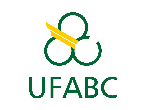Banca de QUALIFICAÇÃO: WALTER CONTABILE DE AMORIM MARTINS
Uma banca de QUALIFICAÇÃO de MESTRADO foi cadastrada pelo programa.DISCENTE : WALTER CONTABILE DE AMORIM MARTINS
DATA : 15/05/2020
HORA: 14:00
LOCAL: por participação remota: https://conferenciaweb.rnp.br/webconf/luiz-67
TÍTULO:
EFFECTS OF THE ADDITION OF REDISPERSIBLE COPOLYMER VAE ON MICROSTRUCTURE AND MECHANICAL PROPERTIES OF A GEOPOLIMERIC MORTAR FOR SETTING CERAMIC TILES
PÁGINAS: 58
GRANDE ÁREA: Engenharias
ÁREA: Engenharia de Materiais e Metalúrgica
SUBÁREA: Materiais Não-Metálicos
ESPECIALIDADE: Cerâmicos
RESUMO:
Due to the constant population growth and consequent housing growth, the demand for construction systems is implicit. Portland cement is the most common binder used in cementitious construction systems. However, the environmental impact caused by its production is notable. In stoichiometric terms, 1 ton of CO2 is produced for each ton of Portland clinker. The development of new technologies that are more environmentally viable is a considerable way. Brazil plays a leading role in the production and consumption of ceramic tiles. The ceramic tile is used to protect the structure and provide aesthetic. The cementitious adhesive mortar is used for laying the ceramic tile. A traditional tile adhesive mortar consists of sand and cement, therefore having a hard and brittle characteristic. However, the increasing use of more technological ceramic tiles and different substrates, with less porosity and less water absorption, makes more difficult to set the tile. Pathological problems such as peeling of the tile is common. In order to develop an environmentally friendly material that replaces the use of Portland cement, this work consists of the elaboration of a mortar with geopolymeric binder for laying ceramic tiles. As the main characteristic of an adhesive mortar is the adhesion, the modification of the geopolymeric mortar with a redispersible copolymer of vinyl acetate-ethylene (VAE) is intended to improve the mechanical and structural characteristics, contributing mainly to adhesion and flexibility issues. The obtained partial results showed that it is possible to make an adhesive mortar with geopolymeric binder, with metakaolin and rice husk ash, being an alternative to a conventional cement tile adhesive mortar. In the next steps, geopolymeric mortars with different contents of EVA will be prepared for determination in the fresh state of the spread capacity and workability (consistency), and in the hardened state of the transverse deformation in flexure, flexural, compressive, and adhesive strengths, and microstructural characteristics (scanning electron microscopy and X-ray diffraction).
MEMBROS DA BANCA:
Presidente - Interno ao Programa - 1997753 - LUIZ FERNANDO GRESPAN SETZ
Membro Titular - Examinador(a) Externo à Instituição - ROBERTO CESAR DE OLIVEIRA ROMANO - USP
Membro Titular - Examinador(a) Externo à Instituição - ANTONIO EDUARDO MARTINELLI - UFRN
Membro Suplente - Examinador(a) Interno ao Programa - 1948454 - VANIA TROMBINI HERNANDES
Membro Suplente - Examinador(a) Externo ao Programa - 1761015 - RENATA AYRES ROCHA




